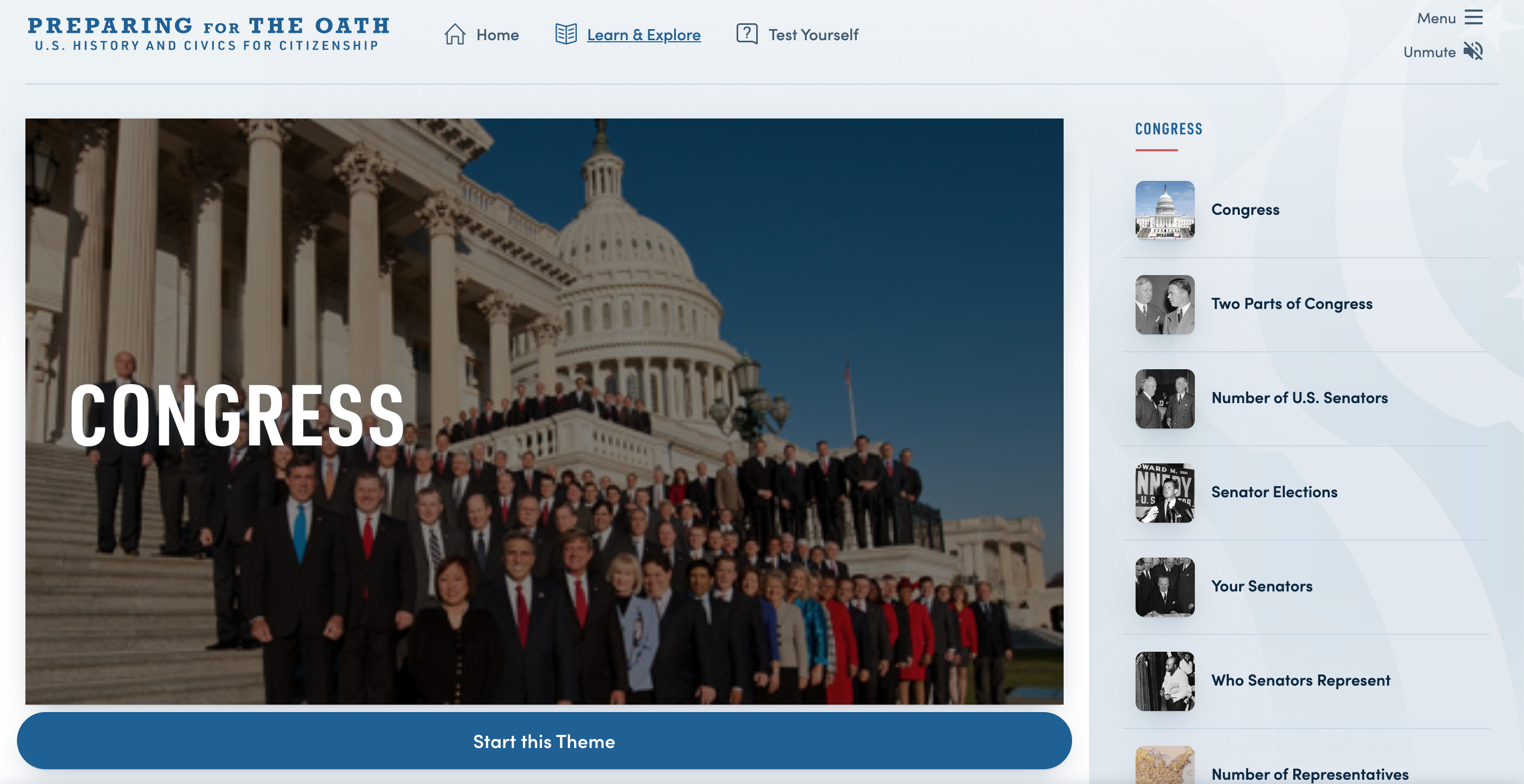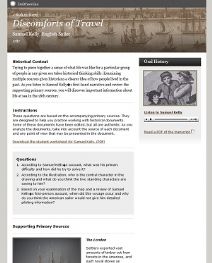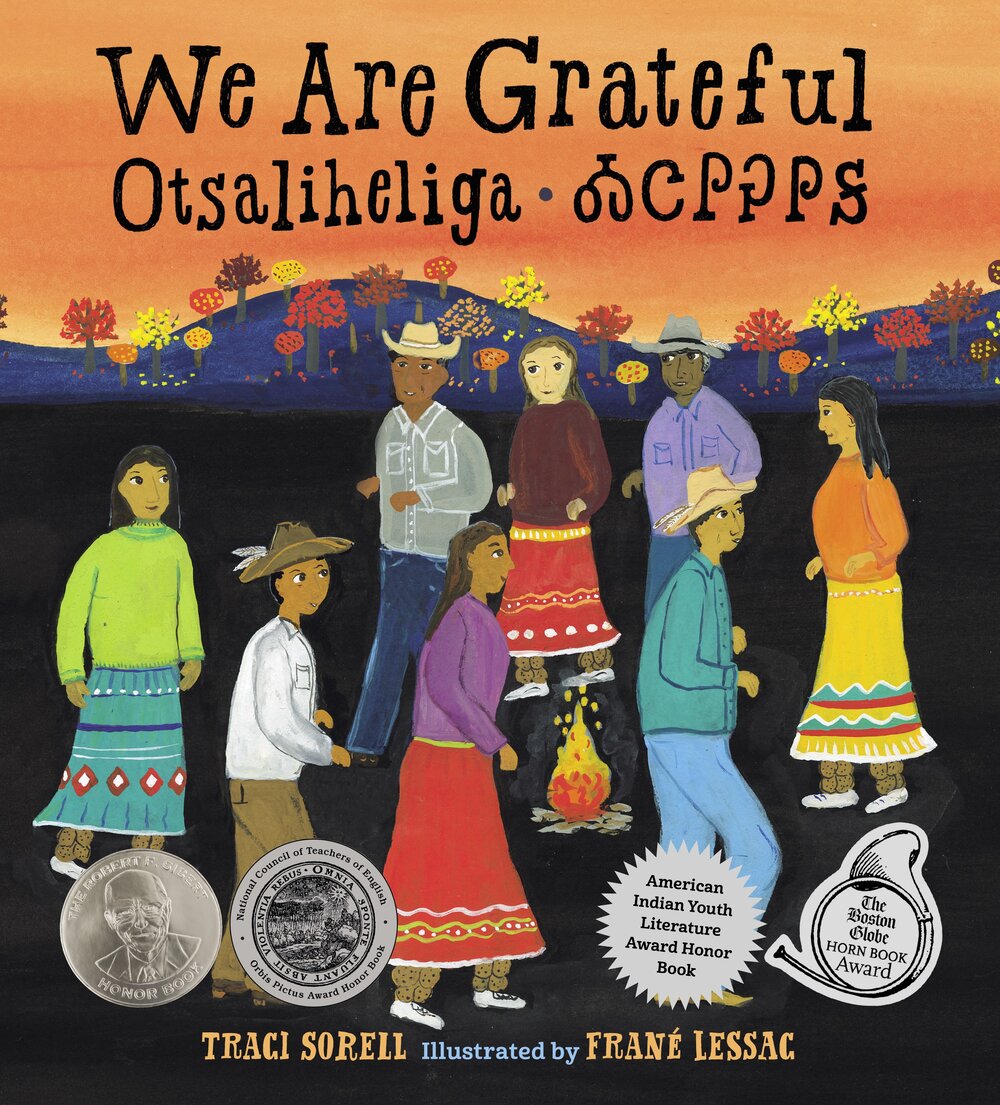As COVID-19 deaths spiked in 2020, Suzanne Firstenberg’s public art installation "In America: How could this happen…"
History Explorer Results (206)
Related Books (350)

Grade Range:
6-12
Resource Type(s):
Interactives & Media, Worksheets
Duration:
12 minutes
Date Posted:
5/10/2013
What do British cattle and Mexican cowboys have to do with the history of Hawaiian folk music? A lot, as it turns out. Slack Key guitar master Reverend Dennis Kamakahi explains in this episode of the History Explorer podcast series. The episode features songs Rev. Kamakahi played during a ceremon

Grade Range:
6-12
Resource Type(s):
Interactives & Media
Duration:
11 minutes
Date Posted:
7/19/2013
Often incorporating aspects ritual and secrecy, fraternal orders are voluntary associations of men and women that date back to the early 18th century. In this episode of the History Explorer podcast series, curator Tim Winkle discusses fraternal orders and his research on a particular object

Grade Range:
4-12
Resource Type(s):
Interactives & Media, Lessons & Activities
Duration:
11 minutes
Date Posted:
3/1/2012
Discover Congress through short videos, mini-activities, and practice questions in this segment of Preparing for the Oath: U.S. History and Civics for Citizenship. The eleven questions included in this segment cover topics such as the bicameral nature of Congress, the number of representatives in

Grade Range:
6-8
Resource Type(s):
Interactives & Media, Worksheets
Duration:
11 minutes
Date Posted:
11/20/2012
In this episode of the History Explorer Podcast, curator Rayna Green discusses what we can learn from seemingly simple line drawings about the lives and memories of Plains Indians who lived over 130 years ago. The resources include a teacher guide and related image.

Grade Range:
6-12
Resource Type(s):
Interactives & Media, Worksheets
Duration:
11 minutes
Date Posted:
4/11/2013
Though not as well-known as figures such as Duke Ellington or Ella Fitzgerald, John Levy made significant contributions to jazz music, both as a bassist and as the first black personal manager in jazz. In this episode of History Explorer, Sarah Coffee interviews Smithsonian Jazz Masterworks Orche

Grade Range:
6-12
Resource Type(s):
Primary Sources, Interactives & Media, Lessons & Activities, Worksheets
Duration:
11 minutes
Date Posted:
4/2/2012
Samuel Kelly was an English sailor, who recorded his experience of a voyage to Philadelphia in 1787. Listen to a dramatic reading of his narrative, and then study the supporting primary sources to answer the discussion questions. This resource is part of a series called “Life at Sea: 1680

Grade Range:
4-12
Resource Type(s):
Interactives & Media, Lessons & Activities
Duration:
10 minutes
Date Posted:
3/1/2012
Use short videos, mini-activities, and practice questions to explore the executive branch in this segment of Preparing for the Oath: U.S. History and Civics for Citizenship. The ten questions included in this segment cover topics such as the powers of the presidency, the role of the Vice Presiden

Grade Range:
6-12
Resource Type(s):
Primary Sources, Interactives & Media, Lessons & Activities, Worksheets
Duration:
10 minutes
Date Posted:
4/2/2012
Louisa Susannah Wells was a female colonist who was loyal to King George III, who was banished from America and returned to England after the War of Independence. Listen to a dramatic reading of her narrative, and then study the supporting primary sources to answer the discussion questions.

Grade Range:
4-12
Resource Type(s):
Interactives & Media, Lessons & Activities
Duration:
10 minutes
Date Posted:
3/1/2012
Use short videos, mini-activities, and practice questions to explore the basic elements of the United States government in this segment of Preparing for the Oath: U.S. History and Civics for Citizenship. The ten questions included in this segment cover topics such as federalism, the Constitution,

Grade Range:
4-12
Resource Type(s):
Interactives & Media, Lessons & Activities
Duration:
9 minutes
Date Posted:
3/1/2012
Learn more about the rights of Americans through short videos, mini-activities, and practice questions in this segment of Preparing for the Oath: U.S. History and Civics for Citizenship. The nine questions included in this segment cover topics such as freedoms in the Constitution, the Civil Right



















